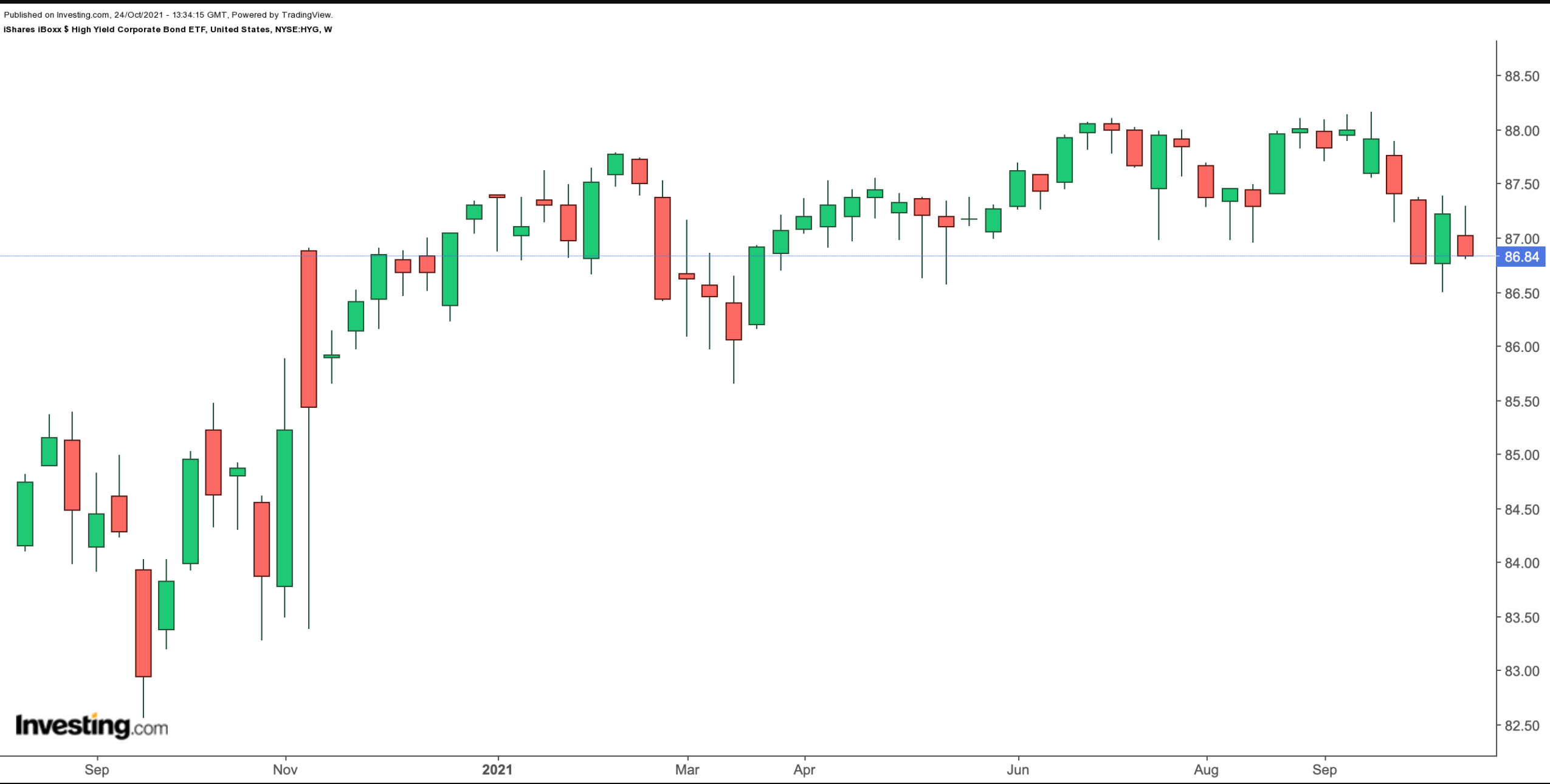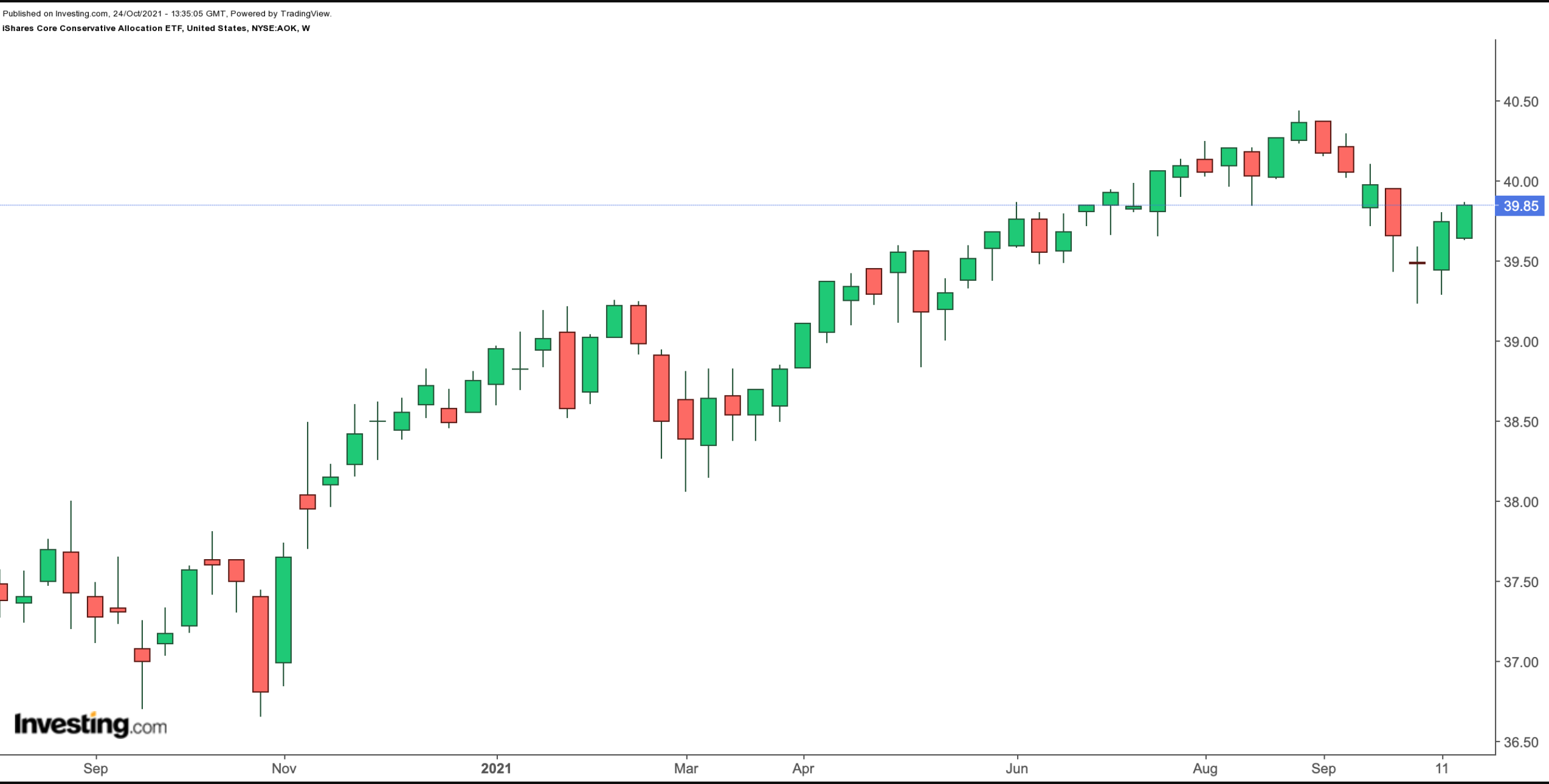The coming trading week promises to be both busy and potentially volatile as a torrent of Wall Street's most prominant mega caps report quarterly metrics. The list includes Advanced Micro Devices (NASDAQ:AMD), Alphabet (NASDAQ:GOOGL), Amazon (NASDAQ:AMZN), Apple (NASDAQ:AAPL), Coca-Cola (NYSE:KO) Facebook (NASDAQ:FB), Microsoft (NASDAQ:MSFT), United Parcel Service (NYSE:UPS), Lockheed Martin (NYSE:LMT), Visa (NYSE:V) and many others.
Meanwhile, the US 10-year Treasury yield is currently hovering around the 1.65% level. In late summer, it was below 1.2%. Rising yields typically worry investors who look to bond ETFs for higher yields or to “park” cash.
Therefore, today’s article introduces two exchange-traded funds (ETFs) that could appeal to a range of readers who expect further choppiness in equity prices. We've discussed numerous other bond funds in previous articles as well.
Readers would know that we cover bond funds regularly (for instance here, here, and more recently here).
1. iShares iBoxx $ High Yield Corporate Bond ETF
- Current Price: $86.84
- 52-Week Range: $83.27 - $88.16
- 12-Month Trailing Yield: 4.25%
- Expense Ratio: 0.48% per year
Our first fund, the iShares iBoxx $ High Yield Corporate Bond ETF (NYSE:HYG) invests in U.S. dollar-denominated, high-yield (or “junk”) corporate bonds. Put another way, these issuers are not necessarily high quality, and could possibly come with default risk. However, investors are compensated with a high yield for taking on elevated credit risk.

HYG, which tracks the returns of the Markit iBoxx USD Liquid High Yield Index, currently has over 1,300 holdings. The fund started trading in April 2007.
Among the leading businesses whose bonds the ETF holds are Clear Channel Outdoor (NYSE:CCO), Ford Motor (NYSE:F), Tenet Healthcare (NYSE:THC), Occidental Petroleum (NYSE:OXY), Centene (NYSE:CNC), and Bausch Health Companies (NYSE:BHC).
The leading ten names comprise close to 15% of net assets of $20.07 billion. In other words, it's not a top-heavy fund and investors would not be over-exposed to any of the companies. In terms of sub-sectors, we have Consumer Cyclical (19.51%), Communications (18.53%), Consumer Non-Cyclical (15.11%), Energy (12.68%), and Capital Goods (8.18%).
Over 55% of the bonds are from issuers with BB credit ratings, followed by B-rated issuers (32.50%) and CCC-rated (10.61%) issuers.
The effective duration of the fund is 3.81 years. That means if interest rates were to rise by 1%, the value of the portfolio would roughly fall by 3.81%. Thus, in an inflationary environment, potential interest rate increases by the Fed would have an effect on ETFs like HYG.
In the past year, the fund is up 2.3%. It hit a multi-year high in late September.
In a yield-starved world, junk bond ETFs have been receiving significant attention. HYG could continue to appeal to investors whose risk/return profiles are appropriate for including high-yield bond funds in their portfolios.
2. iShares Core Conservative Allocation ETF
- Current Price: $39.85
- 52-Week Range: $36.65 - $40.43
- 12-month Trailing Yield: 1.63%
- Expense Ratio: 0.15% per year
This next ETF is not a pure-play bond fund. Instead, the iShares Core Conservative Allocation ETF (NYSE:AOK) invests in a basket of both bond and equity ETFs. The fund was first listed in November 2008.

AOK currently holds seven other ETFs. The top four funds comprise about 95% of net assets of $961.2 million.
- iShares Core Total USD Bond Market ETF (NASDAQ:IUSB) - 58.40% allocation;
- iShares Core S&P 500 ETF (NYSE:IVV) - 16.45% allocation;
- iShares Core International Aggregate Bond ETF (NYSE:IAGG) - 10.32% allocation;
- iShares Core MSCI International Developed Market (NYSE:IDEV) - 9.88% allocation.
We should note that IUSB gives exposure to different bonds across a range of maturities. AOK also allocates funds among both US and global equities.
In the past 12 months, the ETF returned over 6.2%. AOK provides diversification via a single fund and might appeal to investors who do not want to worry about daily swings in broader markets.
